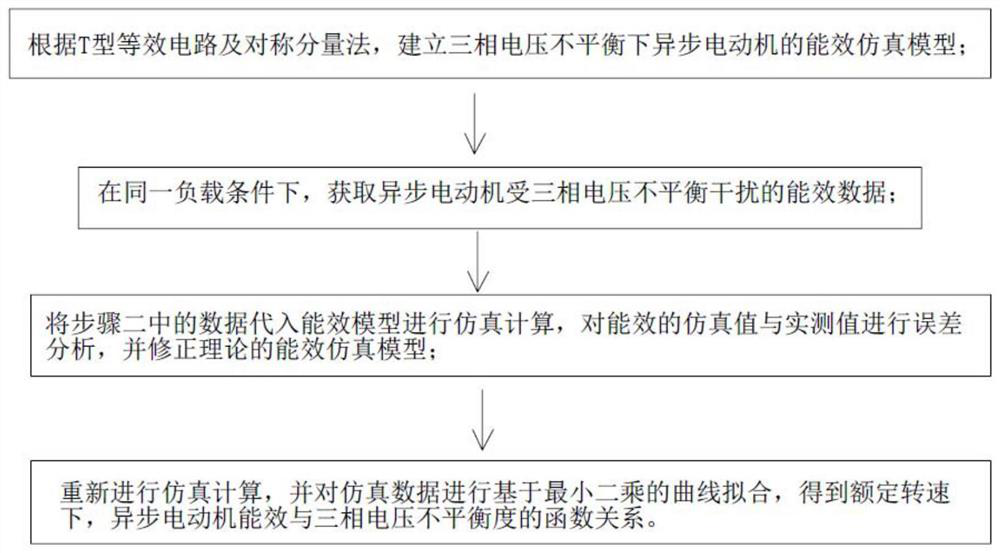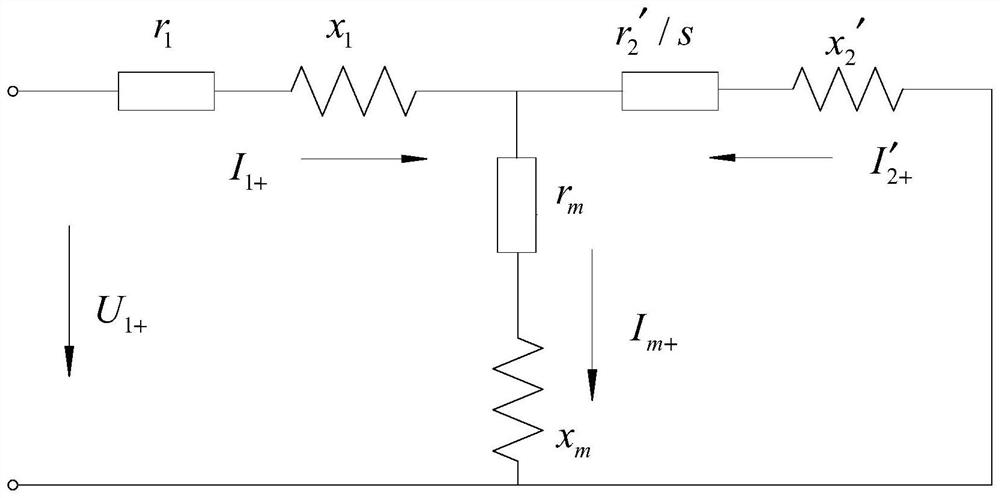Energy efficiency evaluation method of asynchronous motor under three-phase voltage imbalance
A technology for asynchronous motors and three-phase voltage, which is applied in the fields of electrical digital data processing, computer-aided design, and special data processing applications, etc., and can solve problems such as inability to evaluate energy efficiency, unbalanced three-phase voltage, loss, etc.
- Summary
- Abstract
- Description
- Claims
- Application Information
AI Technical Summary
Problems solved by technology
Method used
Image
Examples
Embodiment 1
[0079] Such as Figure 1-5 Shown is an embodiment of an energy efficiency evaluation method for an asynchronous motor under unbalanced three-phase voltage, and the specific steps are as follows:
[0080] Step 1: According to the T-type equivalent circuit and the symmetrical component method, the energy efficiency simulation model of the asynchronous motor under the unbalanced three-phase voltage is established; the T-type equivalent circuit includes the resistor r connected in series on the stator side 1 and reactance x 1 , series excitation resistor r m and magnetizing reactance x m , the rotor resistance r after the series frequency reduction 2 ′ / s and reactance x 2 '; the reactance x 1 , excitation resistance r m ,, the rotor resistance r2' / s are connected to the same point, the exciting reactance x m with the reactance x 2 ' output connection. The T-type equivalent circuit is divided into a positive sequence T-type equivalent circuit and a negative-sequence T-type...
PUM
| Property | Measurement | Unit |
|---|---|---|
| Resistivity | aaaaa | aaaaa |
| Permeability | aaaaa | aaaaa |
Abstract
Description
Claims
Application Information
 Login to View More
Login to View More - R&D
- Intellectual Property
- Life Sciences
- Materials
- Tech Scout
- Unparalleled Data Quality
- Higher Quality Content
- 60% Fewer Hallucinations
Browse by: Latest US Patents, China's latest patents, Technical Efficacy Thesaurus, Application Domain, Technology Topic, Popular Technical Reports.
© 2025 PatSnap. All rights reserved.Legal|Privacy policy|Modern Slavery Act Transparency Statement|Sitemap|About US| Contact US: help@patsnap.com



